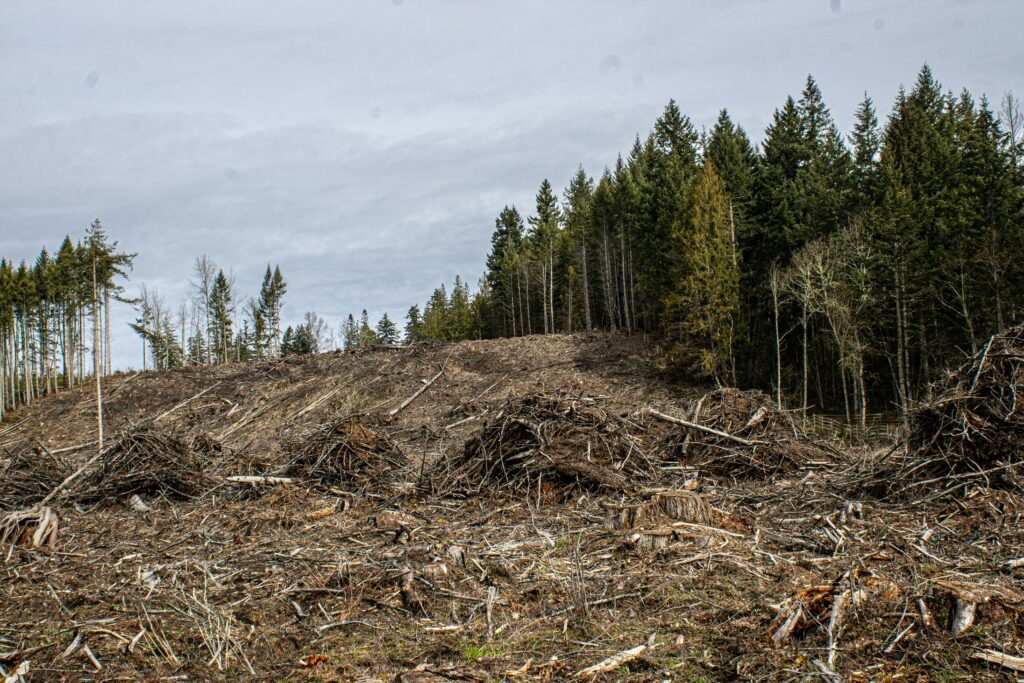The EU’s new Information System for the Deforestation Regulation might sound like another layer of bureaucracy, but it’s actually the opposite. It’s a digital platform built to make compliance easier and more transparent. Instead of juggling spreadsheets, maps, and endless documents, companies can now create, submit, and track their due diligence statements in one place. Whether you’re trading coffee, cocoa, or timber, this system is where your EUDR compliance journey really begins.
What the EU Information System Actually Is
The EU Information System is an official online registry run by the European Commission. It’s where companies, traders, and their authorized representatives submit their Due Diligence Statements (DDS) – documents that prove a product has been sourced legally and without causing deforestation or forest degradation.
Think of it as the central compliance hub for the EUDR. Instead of scattered data, email submissions, or offline checks, everything now runs through this secure web-based platform. Once uploaded, statements are stored and can be viewed or verified by both businesses and the Competent Authorities in each EU Member State.
In practical terms, this means:
- Operators can register and upload data about their products and sourcing locations.
- Each statement is tracked and assigned a unique reference number.
- Authorities can cross-check this data and audit companies directly through the platform.
This streamlined process is meant to make EUDR compliance consistent across the entire EU market.
The Purpose Behind the System
The EU’s goal with the Information System is simple: prove that trade isn’t linked to deforestation. By centralizing reporting, the Commission aims to bring transparency and traceability into supply chains that, until now, were often opaque.
Before this system, verifying whether a product came from deforested land required endless paperwork and guesswork. Now, with a single registry, data can be standardized, compared, and verified using technology like satellite imagery and geolocation coordinates.
It’s not just about compliance for compliance’s sake. It’s about accountability. Once a company files a Due Diligence Statement, it’s legally declaring that its supply chain meets the EUDR requirements, and that claim can be audited.

Key Components of the Information System
To understand how it all fits together, it helps to look closely at the main parts that make the EUDR Information System work in practice.
Az átvilágítási nyilatkozat (DDS)
At the heart of the system is the Due Diligence Statement. Every operator must create one before placing an EUDR-covered product on the EU market or exporting it. Each statement includes essential details such as the product type, HS code, quantity, and description, along with the origin data and supplier documentation. It also contains the geolocation coordinates of where the product was produced and a formal confirmation that it was sourced legally and without causing deforestation.
Once a DDS is submitted, the system assigns it a unique identification number. This number allows other actors in the supply chain to reference the statement and maintain traceability across multiple transactions.
The Dashboard
After submission, users can manage all their statements through a built-in dashboard. It acts as the system’s control center, displaying the current status of each statement—whether it’s pending, validated, or under review. The dashboard provides a clear overview of compliance progress and makes it easier to correct or update information when needed.
Geolocation Mapping
Geolocation data is a central pillar of EUDR compliance, and the system is built to make this process as accurate as possible. Operators can draw areas directly on a digital map, upload coordinate files in the GeoJSON format, or reuse previously stored data. This ensures that every product can be linked to a specific location, making deforestation checks reliable and verifiable.
Machine-to-Machine (API) Integration
For larger companies managing a high volume of data, manual entry would be far too time-consuming. To address this, the EU developed an Application Programming Interface (API) that connects directly to the Information System. This integration allows automatic data transfer between internal company systems and the EU platform. Before gaining full access to the production environment, operators must successfully complete a conformance test to verify data security and technical accuracy.

Making Compliance Easier with EUDR.co
Understanding how the Information System works is one thing – putting it into action is another. Many companies quickly realize that managing geolocation data, gathering supplier documentation, and producing Due Diligence Statements takes far more time and precision than expected. That’s exactly where we step in.
A címen. EUDR.co, we’ve developed tools that bridge the gap between regulation and real-world business operations. Our platform automates the hardest parts of EUDR compliance so that your team can focus on strategy instead of paperwork. With automated monitoring and smart data processing, we turn a complex reporting task into a manageable workflow.
Here’s how we make that happen:
- Satellite-based monitoring: We use verified geospatial data to identify and track potential deforestation risks in your supply chain.
- Automated reporting: Our system gathers all necessary details for Due Diligence Statements and formats them according to EUDR standards.
- Reliable verification: Each data point: from supplier origin to product legality, is validated for accuracy and consistency.
- Affordable compliance tools: We designed our solution to be accessible for businesses of all sizes, from small traders to global exporters.
- Seamless integration: Your data can easily align with the official EU Information System for quick submission and verification.
In short, our goal is to make compliance smarter, faster, and more transparent. EUDR.co ensures that when you upload your reports to the EU Information System, you can do it with confidence, knowing every coordinate and statement has already been checked for accuracy.
Training and Support for Companies
The European Commission knows this system is new and complex, so they’ve built an extensive support structure around it.
There are two versions of the system:
- LIVE Server: The official platform for real Due Diligence Statements. Submissions here have legal value and can be checked by authorities.
- ACCEPTANCE Server: A replica version for training and testing. It’s where companies can practice uploading statements without legal consequences.
Throughout 2025, the Commission is running multiple virtual training sessions, with live demonstrations and Q&A sessions for operators, traders, and their representatives.
So far, the Commission has opened thousands of spaces for training sessions, with ongoing participation from businesses and government officials.
A User Guide is available in all 24 EU languages, along with video tutorials that explain how to create and manage statements step by step.
How to Use the EUDR Information System
Using the EUDR Information System follows a clear sequence of steps.
Step 1: Register and Access the System
Operators and traders start by registering on the official online platform. Once logged in, they can access their dashboard and begin creating their first Due Diligence Statement.
Step 2: Collect Required Data
Before filling out a statement, all relevant details must be gathered. This includes the product type and characteristics, supplier information, country of origin, precise geolocation coordinates, and documentation proving legality and sustainability.
Step 3: Create a Due Diligence Statement
Inside the platform, users enter all collected information, upload supporting documents, and specify whether the product will be imported, exported, or traded within the EU.
Step 4: Review and Submit
After checking that every field is complete, the statement is submitted through the system. It then appears in the user’s dashboard, where it can be viewed, edited, or duplicated later using the “Copy as new” option.
Step 5: Link Statements Across the Supply Chain
Traders further along the supply chain can link their records to previously submitted statements by adding reference and verification numbers. This connection ensures full traceability and keeps compliance consistent from the point of origin to the final sale.

Data Accuracy and Legal Responsibility
Every statement submitted to the LIVE server within the Information System carries full legal weight. This means that the operator is entirely responsible for the accuracy and honesty of the information provided, particularly the geolocation data and claims about product legality.
The European Commission and national authorities have the right to audit or investigate any submission. If they discover inconsistencies, missing information, or false declarations, companies can face penalties or restrictions on their ability to trade within the EU market.
To maintain high data quality, businesses are expected to keep internal records for at least five years, stay transparent with their suppliers, and verify all coordinates through reliable mapping tools or local documentation. As highlighted in the EUDR FAQ (October 2024), “Establishing and maintaining the truthfulness and precision of geolocation information is paramount.”
Why the API Matters for Large Operators
For multinational companies handling large product volumes, the API connection to the Information System is critical. It allows automated data transfers and mass uploads of Due Diligence Statements, saving both time and effort.
The API enables:
- Bulk creation, submission, and modification of statements
- Automatic synchronization of product and supplier data
- Secure data storage with full audit history
But before a company can use the production API, it must complete a technical conformance test to prove system compatibility. This step ensures that only compliant and verified systems can connect to the EU platform, protecting both data integrity and privacy.
Why the Information System Matters
While it might seem like a technical formality, the EUDR Information System plays a bigger role in the EU’s environmental strategy. It’s a signal that sustainability reporting is going digital.
Instead of relying on voluntary certifications or fragmented paperwork, the EU is creating a unified, traceable chain of evidence for deforestation-free products. It’s a move that will likely influence how other environmental or social regulations are enforced in the future.
For businesses, mastering this system early means smoother trade operations, fewer delays at customs, and stronger credibility with buyers demanding sustainable products.
Practical Tips for Businesses Getting Started
Preparing for EUDR compliance doesn’t have to be overwhelming. With a structured approach, you can set up your systems and processes well before the deadlines arrive. Below are some key areas to focus on as you get started.
Get Familiar with the Platform
Use the ACCEPTANCE Server, the training version of the EU Information System, to understand how submissions work. Practicing now will help your team avoid mistakes once the regulation comes into full effect in December 2025.
Focus on Data Accuracy
Start gathering reliable geolocation data from your suppliers and verify it using satellite-based tools or other mapping resources. Clean, verified data will save you time and prevent compliance issues later.
Register Early and Test Your Data
Create your company profile ahead of time and test data uploads to ensure all formats, coordinates, and documents meet system requirements. Fixing technical errors early will make the transition smoother.
Take Advantage of EU Training
The European Commission regularly hosts virtual sessions that walk operators through the Information System step by step. Joining these or reviewing official tutorials is a simple way to build in-house expertise.
Plan for Automation
If your company manages large volumes of data, plan to integrate the API connection as soon as possible. It allows automated submission of Due Diligence Statements, saving time and reducing manual errors.
Keep Clear Records
Maintain copies of all submitted documents, verification reports, and communication with suppliers in your internal systems. This documentation will be essential in case of audits or verification requests.
Taking these steps early not only simplifies future compliance but also builds confidence that your company is ready for the EUDR’s full rollout.

Looking Ahead
By the end of 2025, all medium and large operators will be required to use the EUDR Information System. Smaller companies will join in mid-2026. This phased approach gives businesses time to adjust, but the sooner they adapt, the smoother the shift will be.
In the long run, the system may evolve beyond deforestation reporting. It’s a foundation for broader sustainability monitoring, potentially linking to other EU environmental data systems.
For now, though, the focus is clear: make sure every product entering or leaving the EU market can be traced back to a verified, deforestation-free source.
Final Thoughts
The EU Information System isn’t just another digital tool. It represents a change in how trade, transparency, and environmental responsibility intersect. For many companies, it will feel like learning a new language at first: data formats, coordinates, regulations, and all. But once mastered, it offers something rare in compliance work: clarity.
Everything is in one place. Every product has a traceable history. Every statement has a clear legal standing.
And that’s exactly what the EUDR set out to achieve.
Gyakran ismételt kérdések
What is the EU Information System under the EUDR?
The EU Information System is an online registry created by the European Commission to collect and manage Due Diligence Statements (DDS) required under the EU Deforestation Regulation. Companies use it to prove that their products were sourced legally and are not linked to deforestation or forest degradation.
Who needs to use the Information System?
All operators and traders who place EUDR-covered commodities on the EU market or export them from the EU must use the system. This includes products such as coffee, cocoa, soy, palm oil, timber, paper, and cattle-related goods.
When did the system become active?
The European Commission officially launched the Information System in December 2024. It is already live and available for testing and training before the EUDR’s full application date in December 2025.
What kind of information must be included in a Due Diligence Statement?
Each statement must include the product’s description, quantity, HS code, origin documentation, geolocation coordinates of production sites, and confirmation of legality and deforestation-free status.
Can large companies automate their submissions?
Yes. The Information System includes an API (Application Programming Interface) that allows large operators to manage and submit multiple statements in bulk. Before connecting, companies must pass a technical conformance test to ensure data accuracy and system security.
How does the EU ensure data privacy and security?
All data in the Information System is protected under EU privacy and cybersecurity standards, including the GDPR. Access is restricted to authorized users, and every submission is logged for traceability and accountability.


